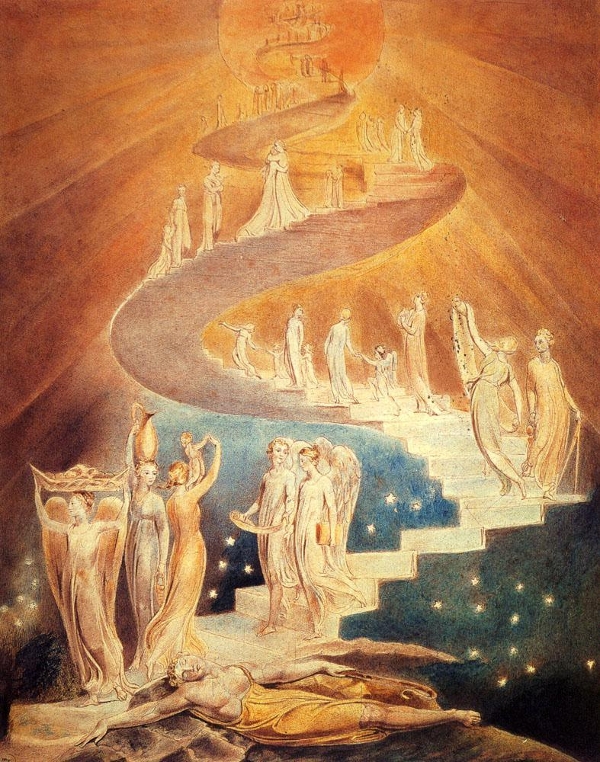Blake’s theory is one of poetic and corporal bringing-to-life made possible by the “enlarged and numerous senses” of the restored prelapsarian moment. For Blake the biblical myth of the Fall is a flight from concreteness to abstraction and the slavery of mystification. Forgetting that all deities reside in the human breast is for Blake equivalent to saying that the “binding” achieved by religion is the binding off of human imagination. Blake’s manifesto is thick with meaning, one strand having to do with the already braided historical-existential origin of religion, another having to do with the apparent “interiority” implied by the residence of deities in the human breast, and yet another having to do with the humanism in the poet’s—and the scholar’s—skeptical stance toward religion.
In the university course I was taking on Blake I learned that a number of people had undertaken to set various of Blake’s works to music. These included our own professor, Tom Mitchell, and before him Allen Ginsberg and Benjamin Britten. Sometime during the term I decided to do the same. The idea became a project of the kind that takes on a life of its own. So, having composed about a dozen melodies it became obvious that it made sense to perform them. Having decided to perform them it seemed that something more was needed, so I added a dramatic presentation of Blake’s poem “The Mental Traveler” as an opening. Having become the Mental Traveler, I required the appropriate garb, and so acquired a heavy cape and a walking staff.
There was still one more phase ahead in this imaginative transformation, however. All the performances I gave in the following years were in the role of “actor and musician” except for one, arranged when I contacted Æthelred Eldridge and offered to visit the Church of William Blake as “guest preacher.” Eldridge accepted my offer and we agreed that I would come to Ohio on a Sunday in February.
It was cold and snowy, the narrow, winding roads around Mt. Nebo were slippery, and I was late. When I arrived I heard Eldridge’s voice from within the one room log church. They had begun without me, not knowing whether the stranger from elsewhere would actually appear. It was the one time in my life when I calculatedly made an Entrance. In character and outfitted as The Mental Traveler, I knocked on the wooden door with my staff, and it became silent inside. Ætheldred Eldridge opened the door and questioningly said my name: “Tom?” I did not speak but strode past him, put down my guitar case and launched into the opening monologue. My intent was to produce the actual effect of a visitation by an unfamiliar Mental Traveler who talked about his journey through “A land of men, and women, too” in which the sexes both thrive and suffer on one another’s account as the generations revolve from youth to age. The performance went well.
The role of visiting preacher suited me well. The Church of William Blake was a real church within a colony of artists whose members were “playing church,” where play and creativity were taken quite simultaneously with great seriousness and with tongue in cheek. The Sunday services were organized around texts read aloud from Blake’s collected works. In addition to the church, the main buildings in Golgonooza were a substantial log house and a printery/book bindery. Some inhabitants of Golgonooza lived in partially refurbished log cabins built by settlers in the early nineteenth century. Eldridge, as leader of the church and contemporary avatar of the spirit which has reputedly animated Milton, Blake, and Ginsberg, has produced both visual and verbal art. His works include paintings which are as visually compelling as are those of Blake. His poetic manifesto is entitled Albion Awake, where Albion is Blake’s term not only for Britain but for the slumbering creative potential of humanity as a whole. It’s a vision worth celebrating.
Page 2 of 2 | Previous page
